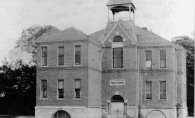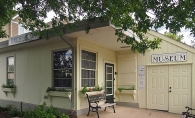What are the questions that have been nagging you about Lake Minnetonka’s past that you’ve never quite been able to answer? We gathered a few of the stumpers and turned to the local historical societies around the lake for some clarification. Thanks to the Excelsior-Lake Minnetonka Historical Society and the Westonka Historical Society, we’ve come up with a few answers. Q: Where are the mounds of Mound, and what’s inside of them? A: “Along a high ridge overlooking Halstead’s Bay was one of the largest and most unusual concentrations of prehistoric burial mounds in the state of Minnesota. There were 69 mounds recorded here in 1883 varying in size and shape, some over 50 feet in diameter and 6 feet tall. Tourist brochures at the time encouraged summer visitors to see what they could find in the mounds. According to newspapers, many of the mounds were still here as late as 1939. Homesteading and the building of roads and parks eliminated almost all of the mounds.” — Historical Tour of the Westonka Area by Jeff Magnuson. “At one time,” says local historian Paul Maravelas, “the mounds were everywhere around the lake and on the lake’s islands. Only a fraction of the mounds known in frontier times are extant. Little is left inside the mounds, because most of the contents were carried away during the 1800s.” A July 22, 2009, Star Tribune article reported, “In the 1880s, around Lake Minnetonka, 524 mounds were mapped at 48 sites. Today, about 40 mounds remain at 12 sites near the lake.” Q: What happened to all the amusement parks? A: “The Big Island Amusement Park opened on Big Island in Lake Minnetonka in 1906 and closed in 1911 due to high expenses and a short tourist season,” according to Lisa Stevens at the Excelsior-Lake Minnetonka Historical Society. “It’s been said the metal from the park was used for the World War I effort, and there is no evidence that any of the attractions were moved or used in other amusement parks. “The Excelsior Amusement Park opened in 1925 on Excelsior Boulevard and Lake Street where Bay View, Maynard’s and Excelsior Bay Gables Condominiums are now. It closed in 1973. It was unable to expand and modernize in its Excelsior location, so the owners closed it and invested in Valleyfair in Shakopee in 1976. The Excelsior Amusement Park roller coaster was demolished, but the merry-go-round and the Scrambler were moved to Valleyfair.” Q: What is the story of the Commons in Excelsior? A: “The area known as the Excelsior Commons was marked ‘Public Grounds’ on the original 1854 Plat of Excelsior Village. It has been used as a public park ever since. It is thought that since most of the early settlers came from New England, they wanted to preserve the tradition of a common public land.” —Excelsior-Lake Minnetonka Historical Society Q: Why are there no hotels on Lake Minnetonka? A: “I won't speculate about why there aren't any hotels now,” Stevens says, “but there were many hotels on Lake Minnetonka in the late 19 century, several of them very large. Approaching the turn of the century, many of the people from the Twin Cities who once visited the hotels bought lakeshore property and built their own cottages. In later years, tourism to Lake Minnetonka continued to decrease due to transportation changes, with rail and automobiles taking tourists farther away to exotic locations such as Yellowstone and California. Short answer: Decreased demand for lakeshore lodging made hotels unprofitable.” Q: Who were the first people on the lake? A: “Small groups of nomadic people hunting large animals inhabited the fringe of the melting glacier that covered Minnetonka 10,000 years ago,” says Maravelas. “As the glacier receded, it left massive blocks of ice immersed in earthen debris, and these blocks of ice formed the soil into a lake. The people who were living here would have witnessed the birth of Lake Minnetonka and would have been the first on the lake.” Q: How did vacationers get mail and packages if they didn’t have many automobiles? A: “Dayton’s [department store] delivered purchases to summer residents at community docks all around the lake, including Island Park, just as streetcar boats delivered passengers to docks and hotels all around the lake, including the Hotel Buena Vista in Mound.” —Westonka Historical Society Q: What is the oldest building on the lake? A: “There are several candidates in Excelsior,” Stevens says. “The oldest building in Excelsior in pretty much its original form is probably Trinity Episcopal Church Chapel, built in 1862–63 and moved from its original location on Third Street to its present location at 322 Second Street to make way for the streetcar tracks. It’s the oldest Episcopal church building in continuous use in the state. “There are other houses that may have been built around very old original dwellings. Part of the Birdhouse Inn and Gardens at 371 Water Street was built in 1858 by early settler James H. Clark, who also took in boarders there. “The right-hand side of 321-323 Third Street was the first two-story frame school house (and second school) in Excelsior, built in 1857 and moved to this site in 1883. It is currently an apartment house.” “The oldest building in Mound is the Mound State Bank building, built in 1913 or so,” says Pam Myers with the Westonka Historical Society. Q: Why do the train tracks go right by the shore of Wayzata? A: As James J. Hill built the railroads, he demanded the best real estate in fledgling villages like Wayzata; otherwise he’d simply bypass the area and the town would languish. Wayzata fought back and passed ordinances against the railroad. Essentially, the new city council demanded that Hill move his railroad tracks back 300 feet from the bank of the lake so residents could enjoy both the beach and a view of the waves. Hill mostly ignored the demands of Wayzata and retaliated by moving the town’s depot far to the east; “Let them walk a mile for the next 20 years!” he said of Wayzata residents. Powerless to fight back, Wayzata eventually passed a “reconciliation ordinance” to bury the hatchet. Hill was so pleased that he built the finest railroad station on the line in Wayzata, right on the lake. Q: What is that yellow two-story steamboat that goes around the lake in the summer? A: The Minnehaha, a “streetcar boat.” Thomas Lowry, who owned Twin Cities Rapid Transit, built a streetcar line out to Deephaven, Excelsior and Tonka Bay beginning in 1905. He even made double-decker streetcars, but these were determined at risk of tipping over at high speeds. Once the passengers arrived on the lake, Lowry wanted regularly scheduled boats to transport them around the lake, especially to his Big Island Amusement Park. His designers essentially took the look of a streetcar and put a hull under it. By the 1920s, ridership declined, as decent roads allowed automobiles to circumnavigate the lake. The boats were scuttled and sunk to the bottom of the lake. In 1979, the Minnehaha was rediscovered, eventually raised to the surface and renovated by the Minnesota Transportation Museum.
Menu
From the July 2013 issue
Historical Questions and Answers about Lake Minnetonka
The secrets of old Lake Minnetonka revealed.
The Hotel St. Louis, built by Charles Gibson in Deephaven in 1879, was the first large hotel on lake.
Photo by:
Westonka and Excelsior-Lake Minnetonka Historical Societies









